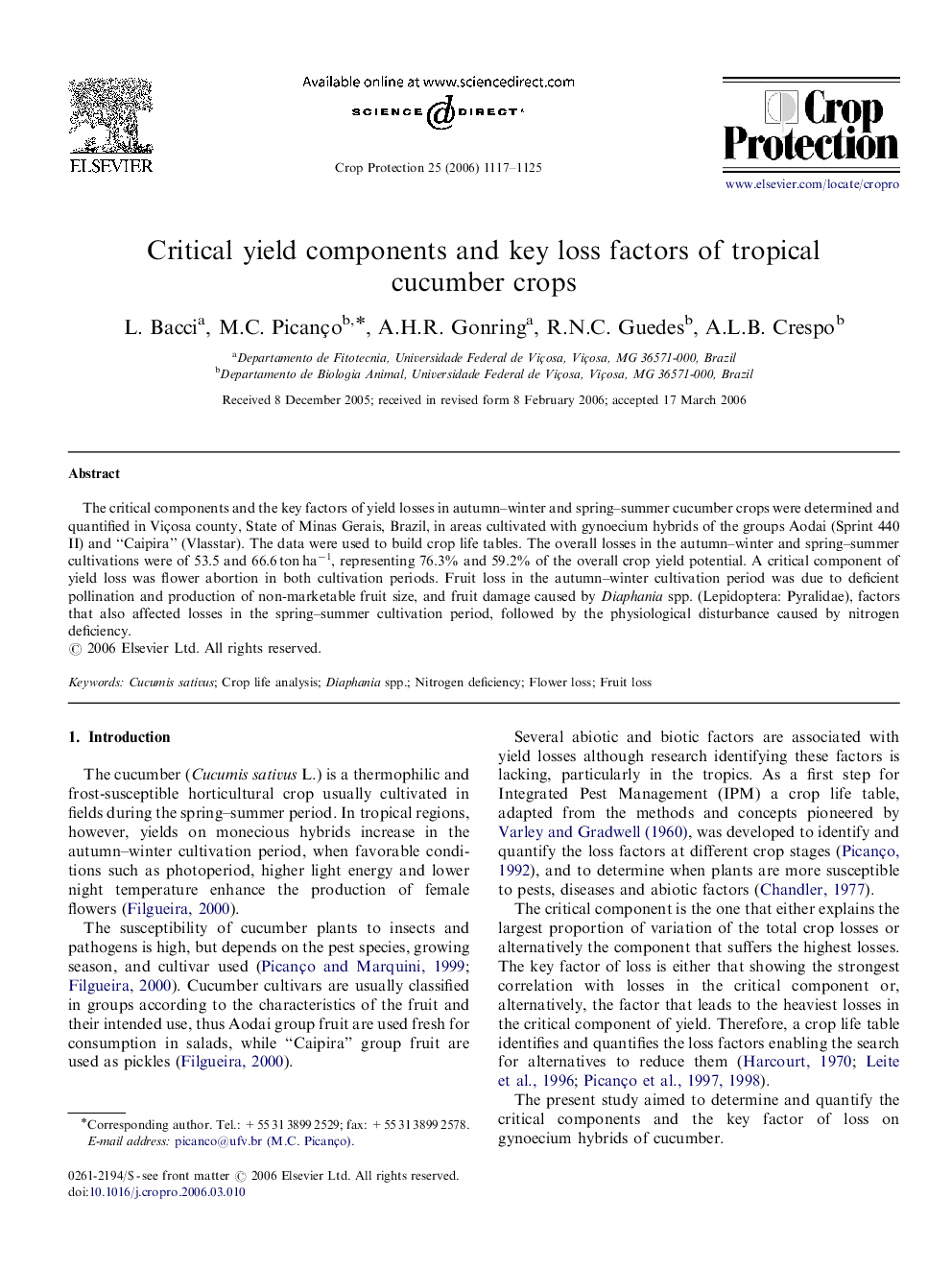| Article ID | Journal | Published Year | Pages | File Type |
|---|---|---|---|---|
| 4507986 | Crop Protection | 2006 | 9 Pages |
Abstract
The critical components and the key factors of yield losses in autumn-winter and spring-summer cucumber crops were determined and quantified in Viçosa county, State of Minas Gerais, Brazil, in areas cultivated with gynoecium hybrids of the groups Aodai (Sprint 440 II) and “Caipira” (Vlasstar). The data were used to build crop life tables. The overall losses in the autumn-winter and spring-summer cultivations were of 53.5 and 66.6 ton haâ1, representing 76.3% and 59.2% of the overall crop yield potential. A critical component of yield loss was flower abortion in both cultivation periods. Fruit loss in the autumn-winter cultivation period was due to deficient pollination and production of non-marketable fruit size, and fruit damage caused by Diaphania spp. (Lepidoptera: Pyralidae), factors that also affected losses in the spring-summer cultivation period, followed by the physiological disturbance caused by nitrogen deficiency.
Keywords
Related Topics
Life Sciences
Agricultural and Biological Sciences
Agronomy and Crop Science
Authors
L. Bacci, M.C. Picanço, A.H.R. Gonring, R.N.C. Guedes, A.L.B. Crespo,
